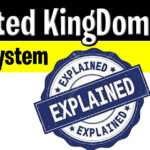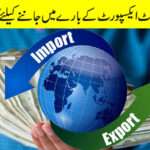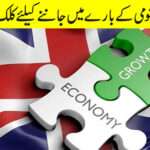Industries in UK
In this article I will give you information which is necessary for your understanding about the industry system of United Kingdom.
Contents of this article
Main industries of UK
Manufacturing industries of UK
Farming (Agriculture) system of UK
Services
Energy
Finance & Banking
Information Technology
Major Industries In UK
In present time major industries in UK are steel, banking and finance, transport equipment tourism and oil and gas.
Manufacturing industries of UK
Manufacturing industries of this Kingdom includes electric power equipment, Machine tools, automation equipment, shipbuilding, aircraft, railroad equipment, electronics and motor vehicles and parts, communications equipment, chemicals, metals, coal, petroleum, clothing, food processing, paper and paper products, textiles and other goods.
Farming (Agriculture)
You have to understand the full meaning of Farming. Basically farming is the rearing of animals and the growing of crops. According to 2006 farming of UK contributed £5.6 billion to the whole economy of UK. And in the same year the total area of agricultural land was 18.7 million hectares and this is about 77% of the total land area in the UK. In the last 30 years farming in United Kingdom has changed. Many people use to employ for farming in UK but in present days, with new techniques and machinery, a few people can easily run a big farm consisting of thousand hectares. Agriculture of United Kingdom is more efficient, highly mechanized, and intensive by standards of Europe, its food production is about 60% and it contributes in (Gross domestic Product) GDP of around 0.5%. In agriculture and Farming one third of production is devoted to arable crops and two third production to livestock. Hilly pastures of UK support Dairy and sheep farming but in lowlands wheat, vegetables and potatoes farming are common so agriculture of UK is responsible for production of cereals, potatoes, cattle, vegetables, oil seed, sheep, fish, and poultry .Agriculture provides around 60 % of UK food needs even though it employs just 1.4% of the Labor force of country.
Types of Farming:
There are 6 types of farming in UK. Different types of farming are due to the influence of climate (especially temperature and precipitation), relief, and soil type and to the market closeness. Some regions of UK have favorable soil for crops, while others regions of this kingdom are used for production of pigs, cattle, sheep and poultry. E.g. in North-west regions of Scotland, Wales and England, cattle and sheep farming are common because sheep can bear the cold winters on the moors and hilly area. In south-west region of England, dairy cows farming are common because rich grass is ideal for their feeding. In the lowlands of Scotland and the south-east region of England, potatoes, grain, and sugar beet are grown. In the east region of England, barley, wheat and vegetables grow in various fields.
Arable Farming; in this type of farming crops and cereals are grown and the UK is considered as the fourth largest producer of oil seed crops and cereal in the EU(Europe) after Poland, France and Germany and this production of UK is accounting for 8% of total Europe production.
Pastoral farming is related with production and rearing of animals including chickens, pigs, beef, hill farming, sheep and dairy cattle.
Mixed farming is the combination of arable farming and pastoral farming.
Horticulture includes ornamental plants or flowers, vegetables and fruit production.
Market gardening refers to as production of vegetables and fruit.
Viticulture refers to as growing of grapes.
Organic Farming is new type of Farming in UK. Popularity of organic Farming has grown rapidly in last few years.
Principal crops of UK
UK is largest producer of crops include fruits, wheat, potatoes, barley, oats, vegetables, sugar beet, oil seed, rape.
Livestock products of UK:
Poultry, eggs, sheep, milk, cattle, meat, wool are the livestock product of UK. Worries about the reusing of creature material into encourage (a training normal in created nations for a long time) have driven, amid the previous ten to 15 years, to various forbiddances on what might be utilized as a part of sustain. The utilization of mammalian meat and bone dinner (MBM) was restricted in light of the fact that it was thought to have caused or spread BSE; the boycott was in this manner reached out to all types of handled creature protein (PAP).
Agriculturists’ decisions of what to sustain their domesticated animals will be administered by a wide range of variables – the age and types of the creatures concerned, their planned items (meat, drain or eggs), the cost and accessibility of nourish materials, their nutritive esteem, and even the season and the topographical area (soil sort and atmosphere) of the ranch.
Energy
The UK has oil, large coal and natural gas reserves; primary energy production accounts for 10% of GDP, one of the highest shares of any industrial nation. Vitality in the UK 2016 sets out the commitment the vitality business makes to the UK economy. The report indicates how the vitality segment makes employments, both specifically and through the production network. Moreover it demonstrates how vitality is occupied with gigantic speculation and how vitality takes its obligations to business, groups and people truly. Features incorporate how the energy segment:
- £18bn put resources into age, circulation, and client benefit
- 637,000 individuals specifically or by implication utilized over the UK
- 13% diminishment in carbon discharges from the power segment
- 40 dynamic vitality providers toward the finish of 2015
- £320m spent to help those battling with their vitality costs
Services
Services of UK particularly include insurance; banking, and business services, account is the largest proportion of GDP of UK. Pharmaceutical industries in UK also play a vital role for the annual GDP. The administration area commands the UK economy, contributing around 80% of GDP; the money related administrations industry is especially essential, and London is the world’s biggest monetary centre. Britain’s airplane business is the second-biggest national aviation industry. Its pharmaceutical industry, the tenth-biggest in the world, assumes a vital part in the economy. Of the world’s 500 biggest organizations, 26 are headquartered in the UK. The economy is helped by North Sea oil and gas creation; its stores were evaluated at 2.8 billion barrels in 2016, in spite of the fact that it has been a net merchant of oil since 2005. There are huge local varieties in thriving, with South East England and North East Scotland being the wealthiest regions per capita. The span of London’s economy makes it one of the biggest urban communities by GDP in Europe.
Finance and Banking
There are right now more than 2 million individuals working in the back and managing an account ventures everywhere throughout the United Kingdom – that is 7 for every penny of the nation’s aggregate working populace. As per the most recent information, the nation has about 40,000 organizations that work in monetary administrations, and a further 37,000 give bookkeeping administrations. Outside of London, the UK’s fundamental money related focuses are in Edinburgh, Leeds, Manchester, and Birmingham. At present, this segment represents 7.5 for each penny of the nation’s GDP.
Information Technology
As of February 2014, the data interchanges innovation segment was worth £58 billion. Almost every real industry depends on innovation keeping in mind the end goal to work, so the significance of the innovation part can’t be thought little of. Alongside inventive and computerized ventures, the IT area represents 4.5 for every penny of the UK’s gross esteem included, and utilizes more than 1 million individuals or 3.7 for each penny of the nation’s dynamic populace. As the information based economy turns into a reality, it is normal that about portion of the UK’s GDP will originate from this part inside the following decade.






